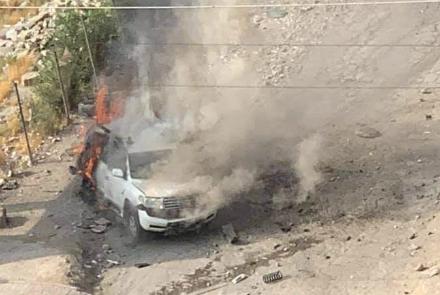The UN mission to Afghanistan (UNAMA) report released on Tuesday said that overall the civilian casualty figure for the first nine months of 2020 dropped by around 30 percent compared to the same period in 2019, but while the number of civilian casualties is lowest in the first nine months of any year since 2012, “the harm done to civilians remains inordinate and shocking.”
"High levels of violence continue with a devastating impact on civilians, with Afghanistan remaining among the deadliest places in the world to be a civilian," the report said.
“The peace talks will need some time to help deliver peace. But all parties can immediately prioritize discussions and take urgent, and frankly overdue, additional steps to stem the terrible harm to civilians,” said Deborah Lyons, the Secretary-General’s Special Representative for Afghanistan in the report.
“New thinking and concrete action towards safeguarding civilian life will not only save thousands of families from suffering and grief but it can also help lessen recriminations and, instead, bolster confidence and trust among negotiators,” said Lyons, who is also head of UNAMA.
UNAMA documented that Anti-Government Elements (AGEs) remain responsible for the majority of civilian casualties (58 per cent). Compared to the same period in 2019, the amount of civilian deaths attributed to AGEs remained at similar levels, although there was a decrease
of 34 per cent in the total number of civilian casualties – killed and injured – attributed to AGEs, said the report.
The report said that the number of civilians killed attributed to the Taliban increased by six percent in the first nine months of 2020, adding that the overall number of civilian casualties – killed and injured – attributed to the Taliban dropped by 32 percent, mainly due to a reduction in the number of civilians injured by suicide attacks and ground engagements, though this was partially offset by an increased number of civilian casualties from targeted killings and illegal, indiscriminate pressure-plate improvised explosives devices (IEDs).
Attacks causing civilian casualties carried out by undetermined age increased. There were more incidents, especially in relation to the use of IEDs and targeted killings, in which UNAMA could not determine which anti-government group was responsible. This also corresponds with a decrease in the number of incidents for which the Taliban or Daesh claimed responsibility.
"Pressure-plate IEDs, used by the Taliban, function in Afghanistan as anti-personnel landmines; they have an indiscriminate effect and are, therefore, illegal at all times. Children made up 31 percent and women 12 percent of civilians killed and injured by PPIEDs," said the report.
"UNAMA urges the Taliban to meet its commitments and cease using these illegal weapons that wreak such harm on Afghan civilians," the report said.
UNAMA also "remains concerned about attacks deliberately targeting civilians, including education, health and humanitarian workers, members of the judiciary, tribal elders, religious leaders and civilian government employees."
The report finds that in the period under review there were fewer civilian casualties attributed to the Daesh due to a decrease in the number of attacks.
Ground engagements, mainly between the Taliban and the Afghan national security forces, caused the most civilian casualties, responsible for more than one third of all civilian casualties. This was followed by suicide and non-suicide IEDs (29 per cent), targeted killings (16 per cent) and airstrikes (eight per cent), said the report.
Pro-Government Forces (PGFs) were responsible for more than a quarter of all civilian casualties – 28 per cent. Civilian casualties attributed to PGFs decreased by 34 per cent in comparison to the same period in 2019, due mainly to the steep drop in international military forces (IMF) airstrikes since March 2020, said UNAMA.
Afghan national security forces (ANSF) were responsible for 23 percent of all civilian casualties; a similar number was recorded in the first nine months of 2019.
Civilian casualties attributed to the Afghan National Army, which was responsible for the vast majority of the ANSF-attributed civilian casualties, increased by 25 percent due to an increase in civilians killed and injured from airstrikes and ground engagements.
UNAMA said: "Almost half of civilian casualties by PGFs is caused by indirect fire, such as howitzers, mortars, rockets and grenades, often used in civilian-populated areas. Women and children comprise almost three out of four civilian casualties from the use of these weapons by PGFs, as the projectiles often land near, or on, civilian homes."
"UNAMA is concerned about the 70 percent increase of civilian casualties caused by Afghan Air Force airstrikes that accounted for most of the airstrike civilian casualties, which overall amounted to eight per cent of civilian casualties. In contrast, since the US and Taliban agreement of 29 February," said the report.


